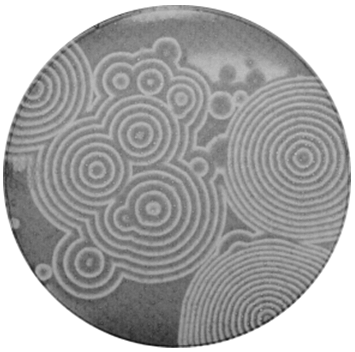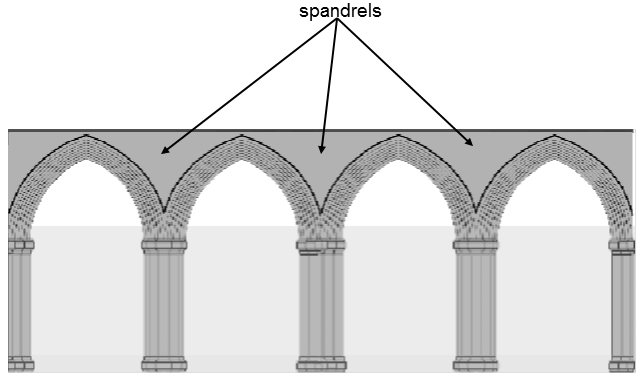I.4.1 Systems become organized through self-organization, natural selection and sorting by stability
The organization of a system is created by similar mechanisms to those valid in the formation of complexity. The most important mechanism responsible for the formation of organized and, from a statistical standpoint, improbable structures, is natural selection (Darwin 1860). The criterion of success of a new evolutionary feature in the process of natural selection is its usefulness from the standpoint of survival and reproduction of the organism. This means that, thanks to natural selection, useful and thus statistically very improbable organized structures are formed in organisms during evolution. The formation of usefulness in organisms will be discussed in a separate chapter.
The statistical improbability of a certain arrangement need not necessarily mean that it has low physical probability. To the contrary, in a great many cases, a system passes spontaneously to a certain arrangement that is simultaneously highly improbable from a statistical point of view. Organized and, from a statistical point of view, improbable structures can thus be formed through self-organization of a systemat the expense of its internal energy or at the expense of energy that the system gains from its surroundings. From a statistical standpoint, a viral capsid is a highly improbable arrangement of the individual molecules. There are an infinite number of ways in which the particular molecules could be mutually arranged and only a small percentage of these ways could act as a transport vehicle for molecules of nucleic acid. Nonetheless, in a solution with a suitable ionic strength the system spontaneously organizes itself into the unique shape of a viral capsid through the action of electrostatic forces and van der Waals forces. The above applies analogously for a great many nonliving systems, for example for a soap bubble.
Simultaneously, self-organization of a system is certainly not the exclusive property of biological systems. Biological systems belong amongst dissipation systems from a thermodynamic point of view. Dissipation systems, including inorganic systems, are capable of spontaneously adopting a state of relatively greater organization and of remaining in this state at the expense of the energy that flows through them (Elitzur 1994). For example, if we evenly heat water in a vessel from the bottom, at a certain moment a regular system of “bumps” appears on its surface, forming a structure that is similar to the cells in a honeycomb (Bénard cells). The water spontaneously organizes itself into these cells through the effect of convection of the flow of the heated water from the bottom of the vessel to its surface. Even more complicate shapes can be formed in chemical systems (Winfree 1974; Whitesides & Ismagilov 1999) (Fig. I.9). In all these cases, the system is organized in accordance with the laws of non-equilibrium thermodynamics into structures that enable the most effective dissipation of the energy flowing through the system. In some cases, specifically in systems with a memory, complex structures can thus be formed that can, under certain conditions, survive for a shorter or longer period of time even after the forces that originally caused their formation have ceased to act. In this way, e.g., individual structures formed by self-organization of the system during ontogenesis can be preserved in the long term.

Fig. I.9 Formation of orderliness in chemical dissipation structures. Complicated patterns are formed in flat dishes in which the Belousov-Zhabotinsky reaction takes place together with diffusion of the relevant reactants, in the simplest arrangement of citric acid, potassium bromide, sulphuric acid and cerium ions. The patterns are formed in the originally homogenous solution, gradually change their shape and disappear only when the reactants are exhausted.
Another mechanism that can lead to the formation of statistically improbable structures consists in sorting from the standpoint of stability.If structures that differ in their degree of stability are formed in the system, there will be a gradual increase in the content of those that will exhibit greater stability – lifetime. These structures will also be accumulated even if the formation of the more stable structures is statistically less probable than the formation of less stable structures. In the above-described Game of Life and the Kauffman models of Boolean networks, these types of structures are accumulated; the formerly mentioned complexity of the structures formed is only a side product, i.e. a random phenomenon accompanying their stability.
If a certain property of an organism reduces the risk of dying out of that species, species will gradually accumulate in the ecosystem, whose members bear just this property. These species will accumulate even if the particular property reduces the viability of its bearer (see IV.8.4). From the long-term perspective, those species will finally survive for which the particular property will not be eliminated in the population through the action of individual selection, i.e. for example, species whose representatives do not exhibit genetic variability in the particular trait, or species whose members become vitally dependent on the particular trait for some reason, such as because of the loss of a certain gene. Paradoxically, the loss of a particular gene and the resulting increase in the dependency of an organism on its environment could bring the species an advantage in a long-term perspective.
In the above-mentioned case, the particular process will tend to have the character of species selection. However, species selection should be considered as a type of selection rather than as a type of sorting, as daughter species will also inherit the above-mentioned advantageous trait from their parent species. However, the same mechanism could function and lead to gradual accumulation of species with the particular properties even if simple sorting were involved, i.e. if the daughter species did not inherit the given trait and rather gained it independently (see Fig. I.5).

Fig. I.10 Spandrels. Some architectural features are formed not intentionally by the architect but as a necessary consequence of the action of physical and topological laws. If there are a series of arched windows next to one another in a wall, a number of triangular areas, spandrels, must necessarily be formed in the upper part of the wall. Similar shapes are formed next to the ceiling in the corners of rooms on whose mutually perpendicular walls a cupola is placed, e.g. in cathedrals with arched ceilings, which are generally denoted in architecture as pendentives. However, in evolutionary literature, in the spirit of the tradition introduced by J.S. Gould, the more general term spandrels is used for them as well
